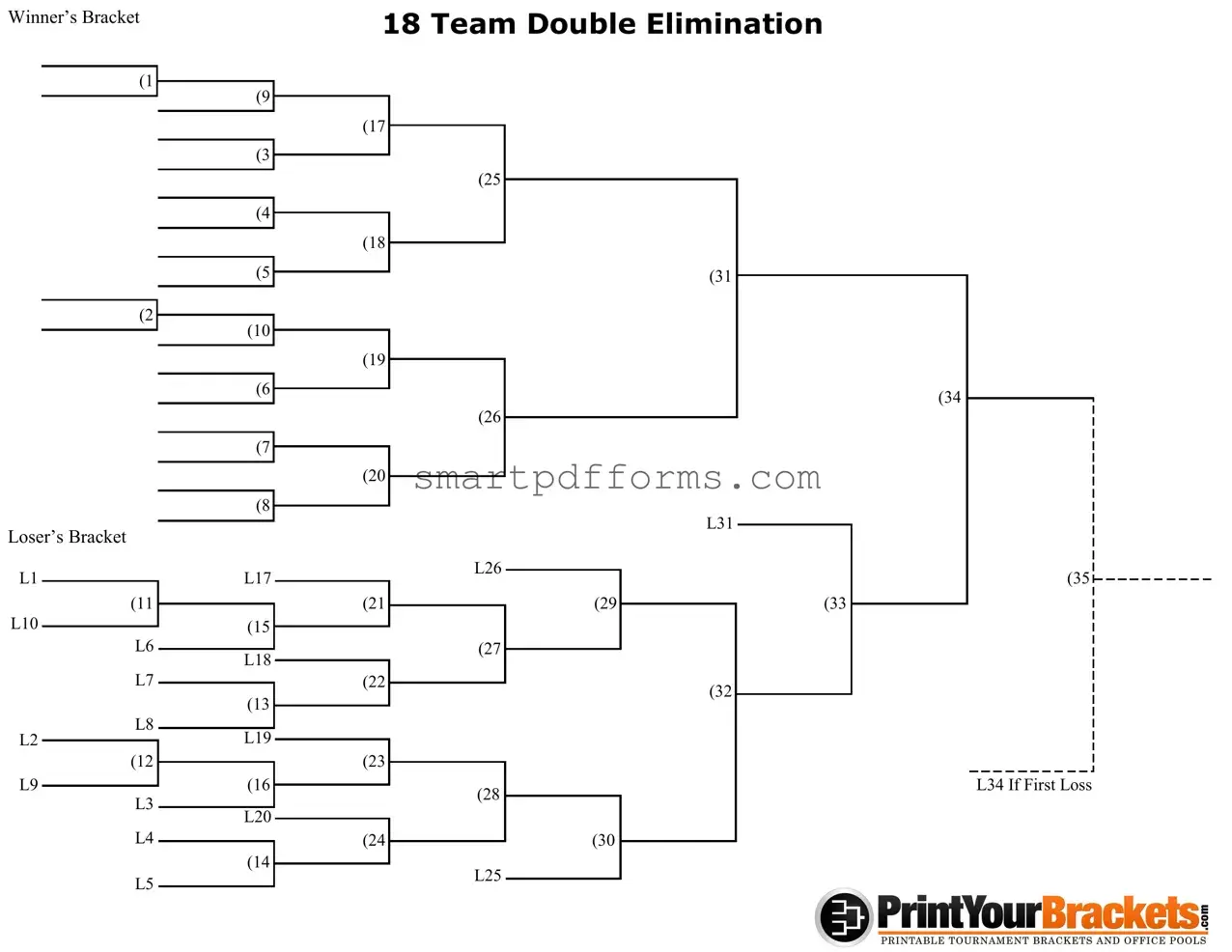The 18 Double Elimination form lays the foundation for a comprehensive and structured approach to organizing tournaments wherein each team or participant is afforded two opportunities before being eliminated from the competition. This format is intricately designed, consisting of two main brackets: the Winner’s Bracket and the Loser’s Bracket. Each team commences their journey in the Winner’s Bracket, but upon experiencing their first loss, they transition into the Loser’s Bracket, where they are given a second chance to strive for the title. This strategic layout ensures a dynamic competition, enabling a potentially wide range of matchups and allowing for an exciting revelation of resilience and competitive spirit. Teams maneuver through intricately numbered matches within the brackets—starting from initial matchups (e.g., 1 vs. 9 in the Winner's Bracket and corresponding positions for losers in the Loser’s Bracket such as L1 and L17)—progressing through various stages represented by a sequence of encounters (e.g., 18 Team Double Elimination, moving towards matches labeled from 17 to 35). The form also incorporates scenarios such as 'IF FIRST LOSS,' indicating a special match setup for teams that make their way through the Loser’s Bracket without a loss until a specific stage, illustrating the depth of planning required to navigate the competition’s structure effectively. The blend of resilience in the face of defeat and the relentless pursuit of victory encapsulated in this format adds a layer of excitement and unpredictability to tournaments, engaging both participants and spectators alike.

